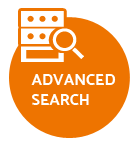The CAN Bus (Controller Area Network) is a serial two-wire full-duplex communication specification which conforms to the international standard ISO-11898 standard communication interface. The protocol of the CAN bus allows multiple nodes in a system to communicate efficiently with each other. It is already widely used in vehicle and vessel internal components; in recent years, it has seen adoption in data communications and control in industrial industry. The CAN Bus is used on the data transfer and control between controllers, a common setup in various industries. Examples include military use, electric power measurement, building automation, semiconductor equipment and elevator networks. This type of monitoring system is made up of many single-device combinations. To verify that things are working properly, one relies upon the integrity of software.
CAN Message Modeling
Users can model the vehicle CAN protocol or other special CAN protocol, set to the CANcheck software, the software will be able to follow the CAN command set and command transfer cycle. Users could provide the meaningful description for each CAN command. This helps to manage and identify all the complex CAN commands.
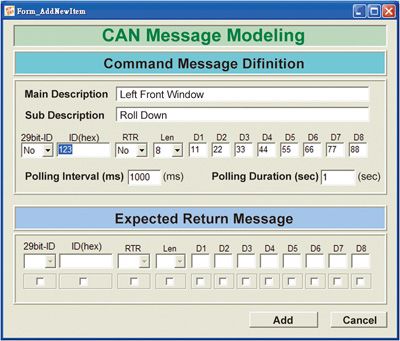
CAN Message Management
Different CAN message sets can be stored in diff erent confi guration fi les. The user can easily pipe different configuration files for different test cases. For example, a car factory can store several diff erent cars’ data in different configuration files, and then call the corresponding one as needed to test each car.
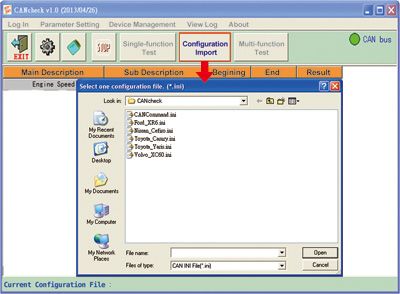
CAN Message Verification
Diff erent CAN instruments have diff erent command sets; correspondingly, the return messages also diff er. CANcheck can be used to perform verifi cation of expected return messages – an easy way of error-checking operations. This feature does away with manual log-checking, and with it human error and tedium.
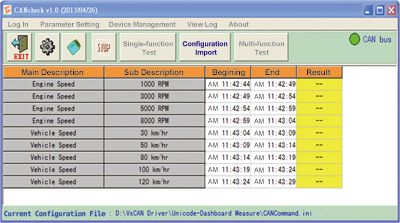
CAN Message Group
In most of CAN applications, the CAN master sometimes iteratively polls entire remote devices with the sequential CAN commands. In the multimessage sending mode, CAN messages will be divided into groups according to CAN-ID. In single group, the CAN commands will be sent sequentially at specific time interval. Every group could work individually at the same time. It will simplify the CAN application projects and help to manage CAN devices more effi ciently.
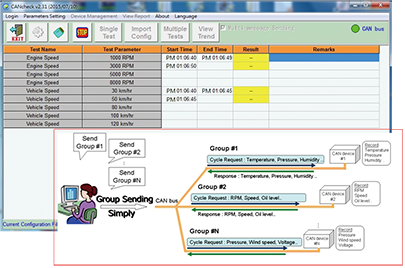
CAN Data Conversion
The CANcheck software provides the functionality of implementing the conversion of the CAN data. The CAN data of the specifi c CAN ID could be converted to the value of “long” type, “float” type and etc. When receiving the specific CAN messages, the CAN data will be converted to the specific data type and data value quickly and automatically. The users could focus on those converted value and need not to convert for each raw data manually. This conversion will help the users to deal with the huge raw data more friendly.
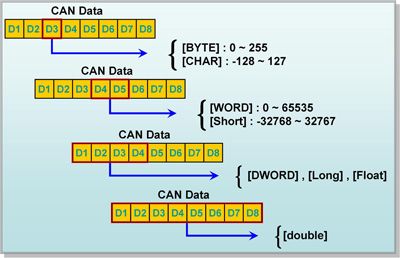

Trend Chart Functionality
The CAN messages transmitted on the CAN bus always contains much important information. One part of the information is used to control the system by the host controller, and the other which may not be used by the host controller is interested during the trial run. The CANcheck off ers the visualization tool, the trend chart, to monitor the information. It can transfer the raw CAN data into the meaningful and physical information, such as engine speed, vehicle speed and fuel consumption, and show these on the trend chart. Without any modifi cation of the host controller, users can obtain the details change of the system easy and quickly.
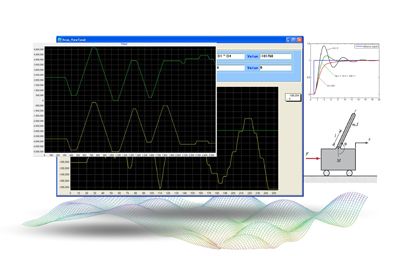
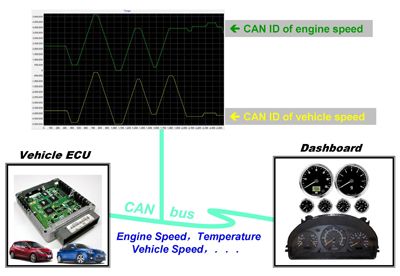
Real-Time Mathematic Functions
In some applications, the meaningful information must be obtained via a serious of complex mathematical calculation from the raw CAN messages. The CANcheck allows users to arrange up to 4 groups of the mathematical formulas which will transfer the raw data to the useful information instantly while the CAN messages are received. Combined with the trend chart, it is a very useful and helpful toolkit for monitoring or debugging the systems.
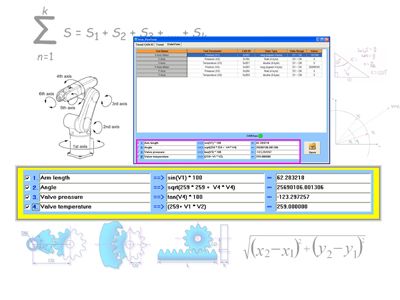
The detailed features are:
- No need to write any programs. The graphical interface is ready-made and easy to operate
- Limited to neither the vehicle nor instrument brand; it's interoperable
- The CAN communication protocol settings file protects against security leaks, ensuring safe operation
- Can set the returned CAN discrimination, eliminating the hassle of wading through logs and manually interpreting results
- Can be used to operate and diagnose lights, windows, dashboard or other vehicular electronic systems and components
- Supports CAN 2.0A and CAN 2.0B specifi cations
- The test command planning interface to set the test command, the transfer cycle, detecting the reply command and users’ description.
- Can store commands to the specific file
- Supports both the single- and multi-function tests. In multi-function testing, the software provide multi-message sending option.
- Provides time stamps for the beginning and end of each test
- Displays real-time CAN status
- Provides the data conversion from the received CAN messages automatically
- Supports two trends to display the real-time waveform which comes from the CAN messages
- Provides four free-edited mathematic functions to transfer the raw data instantly and automatically
- Provides English, Traditional Chinese and Simple Chinese interfaces.
|
|
|
|
|
|
| Model | Product Description |
|---|---|
| CANcheck
|
Software for CAN device detection and diagnosis,USB keypro included |

